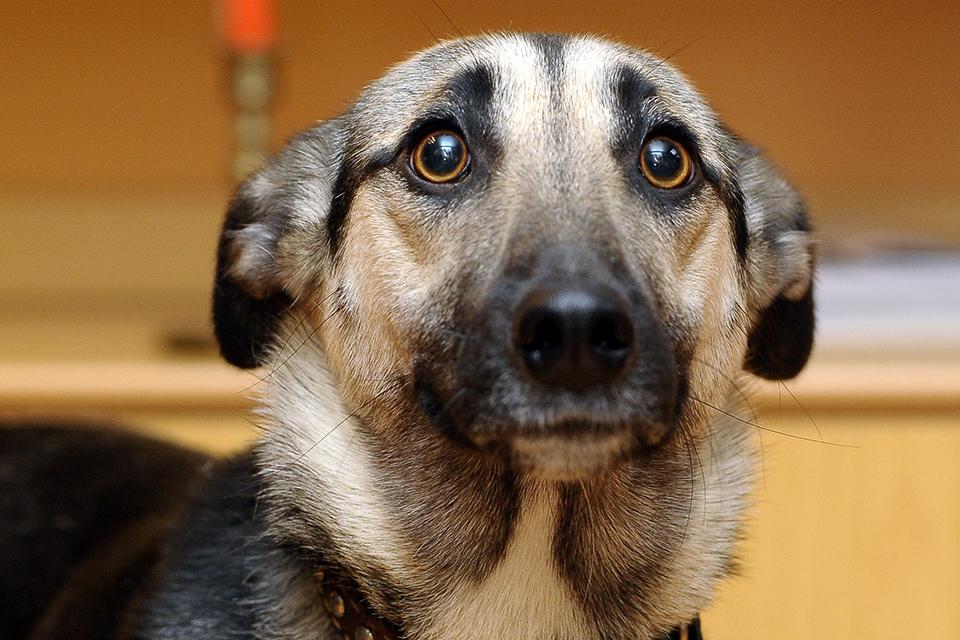Even though dogs do not feel every emotion we do, they do feel anxiety. Being the social animals they are anxiety for separation is something we see often in dog training world. There has been a jump on the number of Separation Anxiety cases during and after the C-19 lockdown. Many calling this phenomenon “Pandemic Puppies” If you can look pass the clickbait branding, the issue is Separation Anxiety.
I dealt with 100s of cases of separation anxiety issues over the years.
You can Listen to the Podcast Episode I recorded by clicking here.
Just to clarify, Separation Anxiety is different than being destructive for being bored. It is a dog that becomes anxious when left alone any period of time showing signs of stress (panting, drooling, general anxiety) and may lead to unwanted and/or destructive behavior, or self harm.
One fo the most severe cases I dealt with was a Ridgeback that destroyed an entire couch. When the owner came from work the only thing left from her couch was the wooden frame. Everything.. seats, cushions, arm rests. everything was completely torn off. But an average Separation Anxiety may look like dog escapes their crate, maybe whines when the owner is leaving, barks for some time or for a long time.
The least obvious manifestation of separation anxiety which is often overlooked by owners is when the dog follow their owners from room to room wherever the owner is. Even to the bathroom.
Causes of Separation Anxiety
Dogs are visual animals, they are also habitual animals, and they like predictability. These qualities that make them such amazing protective creatures, also are what causes them to have separation anxiety.
Remember dogs don’t have abstract concepts like “Now” and “Later.” Just as a 3 year old toddler doesn’t understand Mommy has to go to work, but she will be back in a few hours, and they are sad to see their Mommy go, your dog can’t understand My Human is gone now, but will be back later.
So If your dog is not conditioned to your departures and arrivals, whenever you are not present where she can see you could potentially create anxiety for your dog. And if your dog doesn’t have self-soothing skills or stress coping-mechanism in 8 hours of stress can lead to “destructive behavior.”
Even before C-19 lockdown I dealt with many separation anxiety cases. One of the category we identified was with dogs where the humans are always home. Self Employed people, tele-commuters, older people who don’t leave their homes as much unintentionally created an environment where dog is never alone. Therefore never developed their stress-coping skills.
Another cause of Separation Anxiety we see is when dogs don’t know where they fits in the family. They don’t understand their position in the family hierarchy (That was my polite way of saying when the humans don’t have good boundaries with their dogs.)
One last thing I noticed over the years is often the humans reinforce the anxiety. Like leaving “sad,” or making a big emotional deal for our departures. In turn our dogs pick-up our projected anxiety, Then the human reinforce it by petting the dog and talking in high pitch or smooth voice “That’s OK. Mommy Will be back Soon. Daddy Misses youuu.” So the dog learns from the human’s example Human leaving = Sad. When the human is sad, then I the dog should be sad. This is what is reinforced, that means this is what is expected from me.
How to Prevent Separation Anxiety At The First Place
The saying an ounce of prevention is worth a pound of cure is applicable for Separation Anxiety cases. By using some of the techniques I’ll show you here you can help your dog learn and develop self-soothing, and stress management skills.
First ! Don’t make a big deal when you’re leaving home. Trust me. You don’t have to hug your dog every time you’re going out to dinner. You also don’t have to project “I’m leaving… I don’t want to leave you” towards your dog. You are a human being and that means there are times in your life where you can’t take your dog with you. Just like there are places where you can’t take your child with you. Also don’t ask if your dog is sad or look for clues for your dog’s sadness.
Second. Don’t reinforce anxiety. Either ignore it or at least be neutral in your response. Your dog loves you even if she isn’t sad to see you go, but it is normal for your dog to feel anxious at first. Don’t blow this out of proportion. The only way for her to feel “normalcy” of you leaving and coming back is for you to be and act “normal.” Just like when a toddler first learning to walk takes a tumble, if the parents make a big deal, then the child is likelier to cry, but if the parents are like “oopsie daisy” and rolls with the bump, then the child is likely to roll with it too.
Third. Don’t spend your every awake hour with your dog. Create separation, teach your dog through your example she doesn’t have to be up in your business all the time. Trust me your dog loves you even when she is not always next to you looking at you. That level of neediness is neither good for you nor for your dog. Practice having boundaries with your dog. It’s a good practice for the rest of your life also. If you’re someone who is always home make sure you leave home a few times/day longer than 10 minutes leaving your dog home alone will condition his seeing you leave and come back, leave and come back. So he will be conditioned to your departures.
OK But What About If Your Dog Has Separation Anxiety. What Then?
Maybe you have a rescue dog that came with this issue or perhaps you got a puppy during the lock down and now you’re heading back to office. What then. The Good news is dogs don’t cary their emotional garbage like we humans do. So have the mindset of “Fresh Start” and have the attitude of easy training regiment. -Assuming you Figured out it’s anxiety, not boredom.
Start by teaching your dog separation is not the end of the world. Crate your dog while you’re at home or blocking your dog from being in the same room with you. This will start creating some separation. Let him see you do your thing without being the part of it. Always start with short enough time for your dog to succeed and expand the duration.
Then desensitize her to your departures and arrivals. Since your dog doesn’t experience time linear like we humans you can use this to your advantage. Instead of leaving once or twice day, just leave for a 15 minutes, come back, leave for 15 few minutes, come back many times thought out a day when you can practice this. Obviously DO NOT make a big deal of your departures, and returns…
Pro-Tip: When you’re doing the departure desensitization it’s important that you look exactly like when you’re leaving for work (or whatever situation stresses your dog.) If you have a garage and when leaving for work your dog hears the garage door open make sure you open the garage door and drive away. The point is to desensitize and recondition your dog to help her NOT go through the motions.
And finally don’t gush over your dog every time you come back to the house. I know this usually is the hardest part, but if you want to be the owner your dog deserves, then sometimes you have to do the right thing for your dog regardless of how it makes you feel.
When you get home, maybe go to bathroom and wash your hands, go get a glass of water. Something/Anything to occupy you for about a minute so your attention is not on your dog. This will help your dog break the codependency on you. Don’t worry she will not love you any less. She will just be a healthier and more balanced dog.
This Discussion Continues On Our Facebook Page. Join the Conversation Now.
Opening Hours
M-Sa: 10am - 7pm
Address
1111 Central Ave., Charlotte, NC 28204
Phone
844 864 3647


